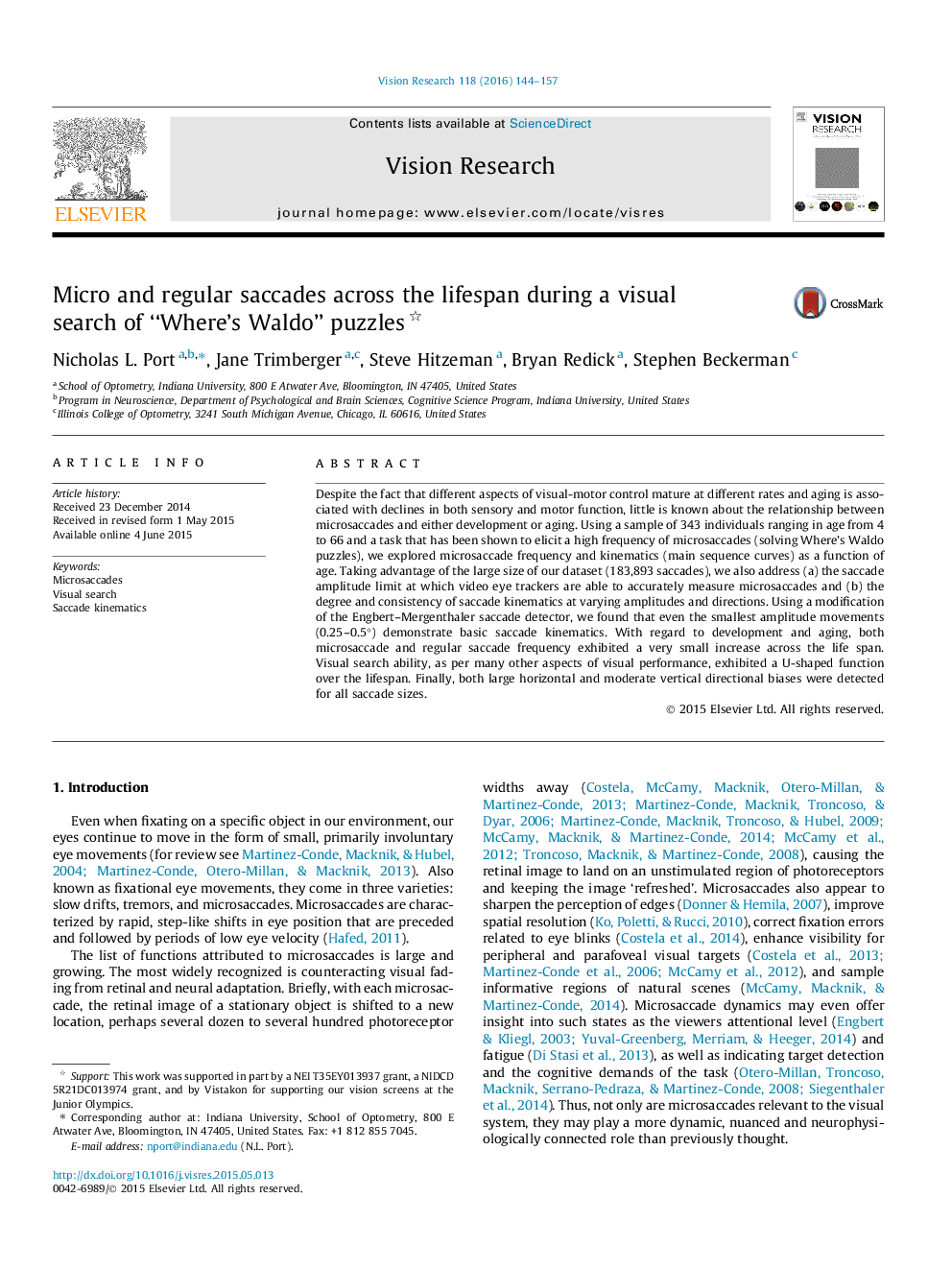| Article ID | Journal | Published Year | Pages | File Type |
|---|---|---|---|---|
| 4033588 | Vision Research | 2016 | 14 Pages |
•Microsaccade and regular saccade frequency increases slightly with age.•Where’s Waldo puzzle solution time follows a U-shaped function across the life span.•Saccade directions show a strong horizontal and weak vertical bias.•Microsaccade and regular saccade main sequence kinematics follow a single function.•Main sequence kinematics change a small amount across the life span.
Despite the fact that different aspects of visual-motor control mature at different rates and aging is associated with declines in both sensory and motor function, little is known about the relationship between microsaccades and either development or aging. Using a sample of 343 individuals ranging in age from 4 to 66 and a task that has been shown to elicit a high frequency of microsaccades (solving Where’s Waldo puzzles), we explored microsaccade frequency and kinematics (main sequence curves) as a function of age. Taking advantage of the large size of our dataset (183,893 saccades), we also address (a) the saccade amplitude limit at which video eye trackers are able to accurately measure microsaccades and (b) the degree and consistency of saccade kinematics at varying amplitudes and directions. Using a modification of the Engbert–Mergenthaler saccade detector, we found that even the smallest amplitude movements (0.25–0.5°) demonstrate basic saccade kinematics. With regard to development and aging, both microsaccade and regular saccade frequency exhibited a very small increase across the life span. Visual search ability, as per many other aspects of visual performance, exhibited a U-shaped function over the lifespan. Finally, both large horizontal and moderate vertical directional biases were detected for all saccade sizes.
